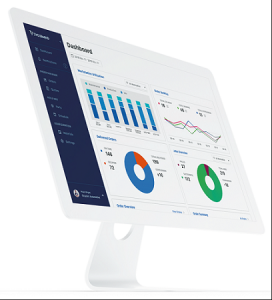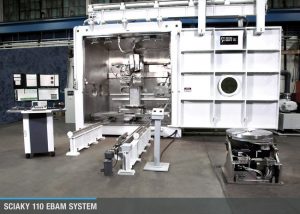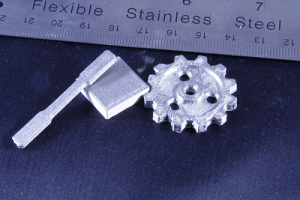We’re beginning with an aerospace 3D printing story in 3D Printing News Briefs today, then moving on to news about some upcoming industry events and finishing with a little business. Launcher tested its 3D printed rocket engine on an important date in history. DuPont will be introducing new semi-crystalline 3D printing products at RAPID + TCT, and Nanofabrica has offered to 3D print micro parts at no cost for interested companies attending the annual euspen conference. Ira Green Inc. used Rize technology to transform its production process, GOM is now part of the Zeiss Group, and the Ivaldi Group received its ISO 9001:2015 certification.
Launcher Tests 3D Printed Rocket Engine
 New York startup Launcher, which uses EOS technology to create 3D printed components for metal rocket engines, has completed many firing tests with these parts over the last year and a half. Recently, on the anniversary of the date the first human left Earth to go into space, the startup announced the results of the latest test.
New York startup Launcher, which uses EOS technology to create 3D printed components for metal rocket engines, has completed many firing tests with these parts over the last year and a half. Recently, on the anniversary of the date the first human left Earth to go into space, the startup announced the results of the latest test.
Launcher’s founder and CEO Max Haot posted on his LinkedIn account that the E-1 copper bi-metal rocket engine, which was 3D printed on the EOS M290, broke the startup’s combustion pressure record at 625 psi, mr 2.5. It will be interesting to see how the engine performs on its next test.
DuPont to Introduce New Semi-Crystalline Materials
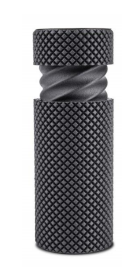 At next month’s RAPID + TCT in Detroit, DuPont Transportation & Advanced Polymers (T&AP), a DowDuPont Specialty Products Division business, will be launching an expansion to its 3D printing portfolio: advanced, high-performance semi-crystalline materials, which will give customers more manufacturing agility and open new opportunities to lower costs while increasing production.
At next month’s RAPID + TCT in Detroit, DuPont Transportation & Advanced Polymers (T&AP), a DowDuPont Specialty Products Division business, will be launching an expansion to its 3D printing portfolio: advanced, high-performance semi-crystalline materials, which will give customers more manufacturing agility and open new opportunities to lower costs while increasing production.
Jennifer L. Thompson, Ph.D., R&D programs manager for DuPont T&AP, will be presenting a technical paper about the materials during the event as part of the Material Development and Characterization session. During her presentation at 10:15 am on May 23rd, Thompson will discuss alternative 3D printing methods, like pellet extrusion modeling, in addition to highlighting new engineering materials and talking about tailored material testing programs. Thompson and other DuPont employees will be at DuPont T&AP’s booth #552 at RAPID to answer questions about the company’s 3D printing materials.
Nanofabrica Offers Free 3D Printing Services for euspen Attendees
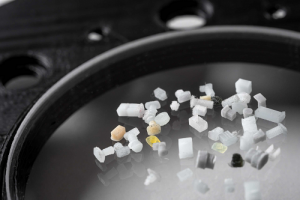 Last month, Israeli 3D printing startup Nanofabrica announced the commercial launch of its micro resolution 3D printing platform. In order to show off the system’s abilities to potential customers, Nanofabrica has made an enticing offer to attendees at next month’s euspen conference and exhibition in Spain: the startup will print parts for interested companies at no charge. Then, the parts printed on the new micro AM platform will be presented to them at the event, which focuses on the latest technological developments that are growing innovation at the micron and sub-micron levels.
Last month, Israeli 3D printing startup Nanofabrica announced the commercial launch of its micro resolution 3D printing platform. In order to show off the system’s abilities to potential customers, Nanofabrica has made an enticing offer to attendees at next month’s euspen conference and exhibition in Spain: the startup will print parts for interested companies at no charge. Then, the parts printed on the new micro AM platform will be presented to them at the event, which focuses on the latest technological developments that are growing innovation at the micron and sub-micron levels.
“It’s quite simple really. We believe that the best way to prove what our AM system can do, how high the resolution and accuracy of the parts we make are, is to manufacture parts for attendees,” Jon Donner, the CEO of Nanofabrica explained. “Registered attendees are welcome to send us their files, and we will examine and print them. That is how confident we are that you will be amazed by the capabilities of our system, and this we feel will mean that we can forge meaningful relationships with manufacturers that will endure into the future.”
Rize 3D Printing Transformed Company’s Production Process
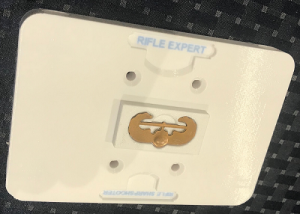 Rhode Island-based IRA Green Inc. (IGI), a full-service manufacturer and distributor of unique uniform items earned and worn by military personnel around the world, recently turned to RIZE and its 3D printing capabilities in order to manufacture small fixtures for its tool shop. The company’s products are in high demand, but lead times were growing longer due to bottlenecks and 8 hours of work for each $300 fixture. Precision is also important for these parts, which is why IGI decided to turn to the RIZE ONE hybrid 3D printer. According to a new case study, IGI’s design team uses the printer every day to manufacture accurate fixtures in just 50 minutes for $2.00 a part. Using the RIZE ONE, which has the unique capability of adding ink markings to parts for verification, the company has been able to standardize its nails and molds, which helped lead to an ROI in less than five months.
Rhode Island-based IRA Green Inc. (IGI), a full-service manufacturer and distributor of unique uniform items earned and worn by military personnel around the world, recently turned to RIZE and its 3D printing capabilities in order to manufacture small fixtures for its tool shop. The company’s products are in high demand, but lead times were growing longer due to bottlenecks and 8 hours of work for each $300 fixture. Precision is also important for these parts, which is why IGI decided to turn to the RIZE ONE hybrid 3D printer. According to a new case study, IGI’s design team uses the printer every day to manufacture accurate fixtures in just 50 minutes for $2.00 a part. Using the RIZE ONE, which has the unique capability of adding ink markings to parts for verification, the company has been able to standardize its nails and molds, which helped lead to an ROI in less than five months.
IGI’s Manufacturing Manager, Bill Yehle said, “Implementing RIZE 3D printing as part of a strategic process shift has completely transformed our production process.
“We have realized an 80% time savings in setup and changeover alone using RIZE and virtually eliminated errors.”
ZEISS Group Acquires GOM
 In an effort to expand its industrial metrology and quality assurance portfolio, the ZEISS Group, a technology enterprise operating in the optics and optoelectronics fields, has acquired GOM, which provides hardware and software for automated 3D coordinate measuring technology. By combining GOM’s optical 3D measuring technology with its own products, ZEISS could expand market access, and create new opportunities, for its Industrial Quality & Research segment. Once the transaction is complete, which should happen soon, GOM will become part of this ZEISS segment, while the legal form of its companies in Germany and elsewhere will stay the same. The financial details of the transaction will not be discussed publicly.
In an effort to expand its industrial metrology and quality assurance portfolio, the ZEISS Group, a technology enterprise operating in the optics and optoelectronics fields, has acquired GOM, which provides hardware and software for automated 3D coordinate measuring technology. By combining GOM’s optical 3D measuring technology with its own products, ZEISS could expand market access, and create new opportunities, for its Industrial Quality & Research segment. Once the transaction is complete, which should happen soon, GOM will become part of this ZEISS segment, while the legal form of its companies in Germany and elsewhere will stay the same. The financial details of the transaction will not be discussed publicly.
“Our growth strategy expressly mentions the targeted acquisition of highly innovative solutions, technologies and companies, which can reach their full potential as part of the ZEISS Group. By acquiring GOM and thereby expanding our solutions portfolio, we are bolstering the leading position of our Industrial Quality & Research segment and will be able to offer even better solutions for our customers. This is entirely in keeping with our corporate strategy, which is focused on our customers’ success,” said Dr. Michael Kaschke, President & CEO of ZEISS.
Ivaldi Group Awarded ISO 9001:2015 Certification
 California startup Ivaldi Group, which uses 3D printing and metal fabrication solutions to provide in-port parts on-demand services for the maritime, mining, offshore, and construction industries has become ISO 9001:2015 certified in less than ten months. This standard, which is certifies quality managements systems that focus on customer satisfaction, continuous improvement, and active involvement of employees and management in a process-based approach, is the first step in the certification process that’s required to certify specific products. This proves Ivaldi’s commitment to constantly improving itself.
California startup Ivaldi Group, which uses 3D printing and metal fabrication solutions to provide in-port parts on-demand services for the maritime, mining, offshore, and construction industries has become ISO 9001:2015 certified in less than ten months. This standard, which is certifies quality managements systems that focus on customer satisfaction, continuous improvement, and active involvement of employees and management in a process-based approach, is the first step in the certification process that’s required to certify specific products. This proves Ivaldi’s commitment to constantly improving itself.
“Certifying our quality management system has helped us to structure our processes to create a solid foundation. This will allow us to improve efficiency, productivity, and traceability,” said Anna D’Alessio, Quality Management Specialist of Ivaldi Group. “Global quality management systems are important to align processes and optimize operations across facilities. This certification proves our commitment to meet requirements of stakeholders affected by our work.”
Discuss these stories and other 3D printing topics at 3DPrintBoard.com or share your thoughts in the Facebook comments below.

